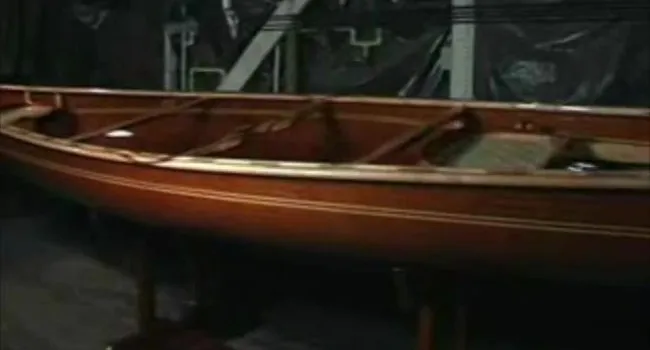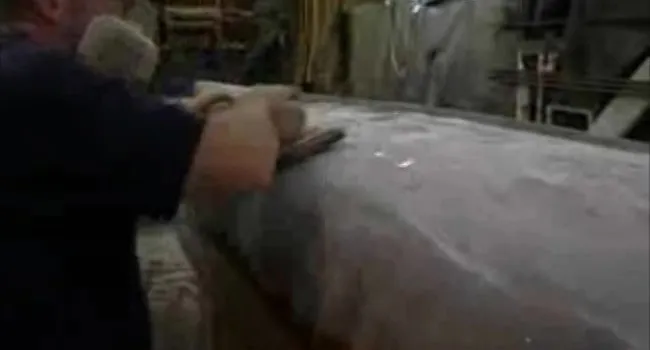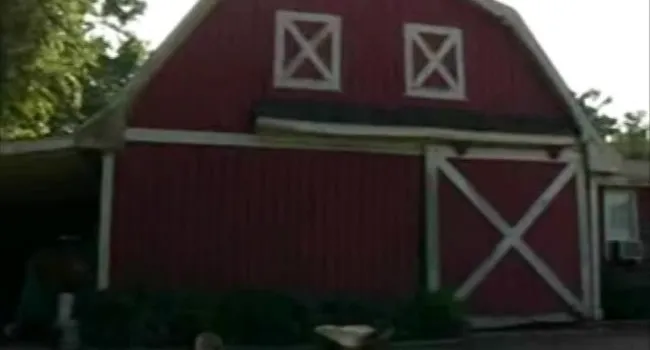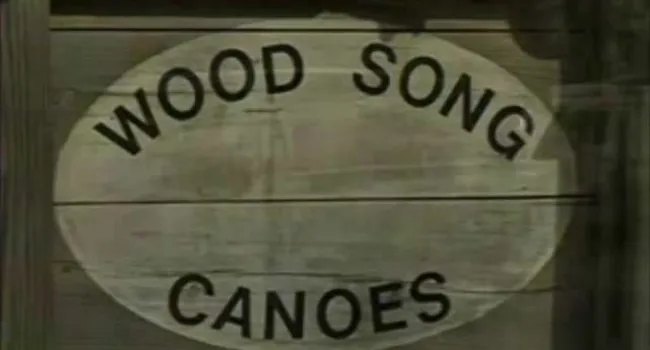In June 2002, an 18th century Cherokee canoe was found in the cold clear water of the Chattooga River. Early Cherokee canoes called dugouts were burned and scraped out of single tree trunks. The excavated boat was in the traditional Cherokee style, but showed evidence of metal tool work introduced in the colonial era. Phil Greene, a master canoe builder living in Round-O, also applies modern tools and technologies to create what are essentially traditional canoes -- durable, seaworthy boats that demonstrate the art and technique of woodcraft.
The hull is essentially the canoe minus its trim - seats, thwarts, handles and other hardware. The building of a hull involves cutting thin uniform strips of wood clamping them to a canoe form. The form is a temporary "skeleton" that supports the construction of the hull. Strips are attached to one another using glue along with the " bead and cove " technique. A bead is a curved edge on top of a strip that fits into a cove, or groove, on the bottom of another strip. Epoxy is applied to the interior and exterior of a finished hull, giving it a shiny, sturdy and waterproof finish. The process of building a hull takes about a month.






